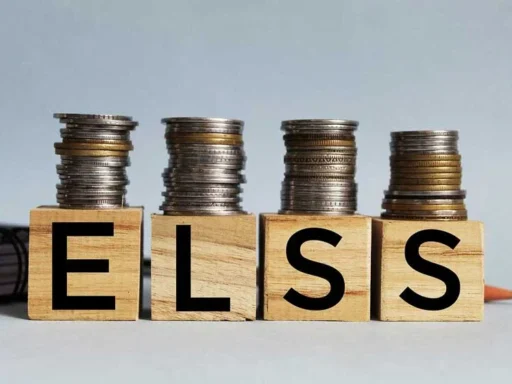Managing money can be one of the most challenging parts of adult life. Many people find themselves struggling with financial security because they don’t have enough emergency savings, aren’t saving enough for retirement, or are dealing with high levels of debt. It’s easy to see why: without the right habits, spending can quickly get out of control. However, by practicing smart spending habits, you can work your way out of financial stress, build better savings, and set yourself up for a more secure future.
Smart spending isn’t about completely cutting out all the fun or depriving yourself of anything you enjoy. It’s about making intentional decisions with your money—spending where it matters most, cutting back where you can, and finding balance. Whether you’re considering debt settlement for dealing with debt or just looking to improve your financial situation, there are plenty of ways to change your spending habits for the better. Here are some practical tips to help you start spending smarter and setting yourself up for long-term financial health.
Track Your Spending and Set Goals
One of the first steps to developing smart spending habits is understanding where your money is going. Most people spend money each day without truly knowing how much they’re spending or what it’s all going toward. Tracking your spending helps you identify patterns and pinpoint areas where you can cut back.
Start by reviewing your bank and credit card statements for a few months to see how much you spend in different categories, like dining out, entertainment, transportation, and shopping. Once you’ve identified where your money is going, set goals to limit unnecessary expenses and allocate more to savings or paying off debt.
For example, if you’re spending $300 a month on eating out, try cutting it down to $150 by cooking more at home. You can then use the extra savings to build your emergency fund or pay off credit card balances. If you’re already carrying debt, a debt settlement program can also be an option to reduce what you owe and take a step toward financial freedom.
Create a Budget That Works for You
Once you’ve tracked your spending, it’s time to create a budget. Many people avoid budgeting because they think it’s too restrictive, but it’s actually one of the most effective tools for managing money. A budget is not about cutting out every little luxury; it’s about allocating your money in a way that ensures you can cover your essentials, save for future goals, and avoid overspending.
Start by listing your monthly income and then categorizing your expenses. A good rule of thumb is to follow the 50/30/20 rule:
- 50%for needs (e.g., rent, utilities, groceries, insurance)
- 30%for wants (e.g., dining out, entertainment, hobbies)
- 20%for savings and debt repayment (e.g., emergency fund, retirement, loan payments)
If you find that your wants are eating into your savings or debt repayment, try cutting back on non-essential spending, such as subscriptions or impulse purchases. This helps you focus on what matters most—building a solid financial foundation for yourself.
Prioritize Debt Repayment
If you’re carrying debt, it can feel overwhelming. High-interest debt, especially credit card debt, can create a cycle where it’s hard to get ahead. But by developing a strategy to manage and pay off debt, you can free yourself from the burden and improve your financial health.
The first step in tackling debt is prioritizing it. One method is the debt snowball strategy, where you focus on paying off your smallest debt first, while making minimum payments on larger debts. Once the smallest debt is paid off, you move on to the next one. This method can provide quick wins and motivate you to keep going.
Alternatively, you can use the debt avalanche method, which targets the highest-interest debt first, saving you more money in the long run. If you’re struggling with high debt, a debt settlement program may also help reduce the total amount owed, allowing you to settle for less than what you owe and get back on track.
In any case, the sooner you start paying down your debt, the sooner you can redirect that money into savings, investments, or other financial goals.
Focus on Saving Regularly
Saving is another key pillar of financial stability. But saving doesn’t have to mean putting away huge amounts of money at once. Start small and build up over time. The goal is to make saving a habit, not a burden.
Set up automatic transfers from your checking account to your savings account each payday. Even if you can only afford to save $25 or $50 per month, it will add up over time. Once you’ve established your emergency fund (typically three to six months of living expenses), you can shift your savings goals toward retirement, a home down payment, or other future plans.
Consider putting savings into a high-yield savings account or a money market account to earn more interest. Keep in mind that an emergency fund is separate from money you use for short-term spending. Only use it for true emergencies, such as medical bills, urgent car repairs, or job loss.
Be Mindful of Impulse Purchases
Impulse purchases are one of the quickest ways to derail your budget and savings goals. It’s easy to get caught up in the moment and buy something you don’t really need. However, by becoming more mindful of your purchasing decisions, you can avoid unnecessary spending.
One way to reduce impulse buying is by implementing a 24-hour rule. When you feel the urge to make an impulse purchase, wait 24 hours before deciding whether to buy it. During that time, you can evaluate if you really need it or if it’s just a passing desire. This simple practice can help you curb unnecessary purchases and redirect that money toward savings or paying down debt.
Additionally, avoid shopping when you’re bored or stressed. Emotional shopping can lead to buying things you don’t need and can add to your financial stress. Find healthier ways to cope with emotions, such as going for a walk, reading, or engaging in a hobby.
Look for Ways to Cut Back
Smart spending isn’t about depriving yourself of everything fun—it’s about cutting back on the things that aren’t adding value to your life. Look for areas where you can save without sacrificing too much enjoyment.
For example, you can reduce entertainment costs by choosing more affordable options, like having a movie night at home instead of going out, or by using coupons and discount codes for your favorite stores. If you’re paying for multiple streaming services, consider cutting back on the ones you don’t use often.
Another simple way to save is by taking a closer look at your monthly bills. Can you negotiate a better deal on your internet, phone plan, or insurance? Small changes like these can lead to significant savings over time.
Stay Consistent and Track Your Progress
Developing smart spending habits is a journey, not a quick fix. The most important thing is to stay consistent and track your progress. Celebrate small victories along the way, such as reaching a savings milestone or paying off a credit card balance. This will help you stay motivated to keep making smart financial decisions.
It’s also important to regularly reassess your spending habits. Life changes, and so do your financial goals. Make sure your budget, savings, and debt repayment strategies still align with your current situation. Adjust as necessary and keep moving forward.
Conclusion: Building a Strong Financial Future
Building smart spending habits takes time and discipline, but it’s worth the effort. By tracking your spending, creating a budget, paying down debt, and saving regularly, you can create a stable financial future for yourself. Even small changes, like cutting back on impulse purchases or automating your savings, can have a big impact over time.
Remember, the goal is not to completely eliminate enjoyment from your life. It’s about finding a healthy balance that allows you to live comfortably today while preparing for a secure tomorrow. With the right habits and a little bit of effort, you’ll be on the path to financial success.





